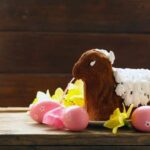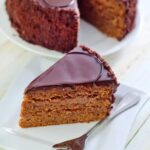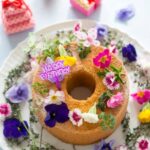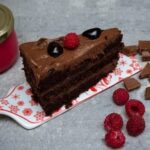Buttercream is an essential component in cake decorating, providing both flavor and structure to your creations. In this article, we’ll explore how to make buttercream for cake decorating, from its historical roots to the different types available today. Whether you’re a beginner or a seasoned baker, mastering the art of buttercream is crucial for achieving professional-quality cakes.
Buttercream has been a mainstay in cake decorating for centuries, evolving to become a versatile and indispensable tool for bakers. From American buttercream to Swiss meringue and Italian buttercream, each type offers unique benefits and drawbacks. We’ll delve into the characteristics of each type and provide insights on choosing the best one for your specific cake decorating needs.
To create the perfect buttercream, quality ingredients are key. We’ll discuss the essential components required to make buttercream from scratch, along with recommended brands and tips for achieving optimal flavor and consistency. Whether you’re looking for traditional or natural alternatives, we’ll guide you through selecting the best ingredients for your buttercream masterpiece.
From troubleshooting common issues to exploring advanced cake decorating techniques using buttercream, this comprehensive guide will equip you with everything you need to elevate your cake decorating skills. Join us as we uncover the secrets of making delectable and visually stunning buttercream for all your cake decorating endeavors.
Types of Buttercream for Cake Decorating
American buttercream, Swiss meringue buttercream, and Italian buttercream are the three most commonly used types of buttercream for cake decorating. Each type has its own unique flavor, texture, and characteristics that make it suitable for different cake decorating needs.
American buttercream is the simplest type to make, using a combination of butter, powdered sugar, and flavorings. It has a sweet taste and is quick to prepare, making it a popular choice for amateur bakers. However, American buttercream can be overly sweet and may not hold up well in warm temperatures.
Swiss meringue buttercream is made by heating egg whites and sugar over a double boiler before whipping it into stiff peaks with softened butter. This results in a silky smooth texture and less sweetness compared to American buttercream. Swiss meringue buttercream is more stable in warmer temperatures and pairs well with various cake flavors.
Italian buttercream involves making an Italian meringue by adding hot sugar syrup to whipped egg whites before incorporating softened butter. The result is a creamy and luxurious frosting with a light texture. Italian buttercream is less sweet than American buttercream and holds up well in warm conditions, making it an ideal choice for wedding cakes or intricate cake designs.
These three types of buttercreams offer unique benefits and drawbacks that cater to different cake decorating needs. Depending on the desired taste, texture, and stability of the frosting required for the specific cake project at hand will determine which type of these luxurious frostings you will go with.
| Types of Buttercream | Characteristics |
|---|---|
| American Buttercream | Simple to make but overly sweet; not stable in warm temperatures |
| Swiss Meringue Buttercream | Silky smooth texture; less sweet; stable in warmer temperatures |
| Italian Buttercream | Creamy and luxurious; less sweet; holds up well in warm conditions |
Ingredients for Making Buttercream
When it comes to making delicious and creamy buttercream for cake decorating, having the right ingredients is essential. Here we will provide a detailed list of the essential ingredients for making buttercream and some recommended brands for achieving the best results.
Essential Ingredients
To make traditional American buttercream, you will need unsalted butter, confectioners’ sugar (also known as powdered sugar), vanilla extract, and milk or cream. These are the basic ingredients for a simple and sweet buttercream that is perfect for cake decorating. For those looking to experiment with different styles of buttercream, such as Swiss meringue or Italian buttercream, additional ingredients like egg whites and granulated sugar may be required.
Recommended Brands and Quality Tips
When it comes to the quality of ingredients, using high-quality unsalted butter can make a significant difference in the flavor and texture of your buttercream. Look for reputable brands that offer unsalted butter with a rich and creamy consistency.
For confectioners’ sugar, opt for a finely ground variety that will result in a smoother buttercream. When it comes to vanilla extract and milk or cream, choosing pure vanilla extract and high-fat content dairy products can enhance the overall taste of your buttercream.
In addition to these basic ingredients, those looking to add natural flavors or colors to their buttercream should consider using organic extracts or food coloring made from natural sources. This can elevate both the taste and appearance of your buttercream without compromising on quality or flavor. By selecting top-quality ingredients from trusted brands, you can ensure that your homemade buttercream is of professional quality and is perfect for cake decorating.
Step-by-Step Guide on How to Make Buttercream
Making buttercream from scratch is a simple yet essential skill for any baker or cake decorator. To start, gather the following ingredients: unsalted butter, powdered sugar, vanilla extract, and heavy cream. Using a stand mixer or hand mixer, beat the softened butter on medium speed until creamy. Gradually add the powdered sugar and mix on low speed until well combined. Add the vanilla extract and heavy cream, then increase the speed to medium and beat until smooth and fluffy.
It’s important to achieve the perfect consistency when making buttercream. If it’s too thick, add more heavy cream one tablespoon at a time. On the other hand, if it’s too thin, gradually add more powdered sugar until desired consistency is reached. For chocolate buttercream, simply melt semi-sweet chocolate and let it cool before adding it to the mixture at the end.
When making large batches of buttercream for cake decorating projects, it’s best to divide the finished product into smaller portions before coloring them in different shades. This allows for greater flexibility when working with multiple colors in intricate designs and cake decorations. Store any leftover buttercream in an airtight container in the refrigerator for up to two weeks or in the freezer for up to three months.
| Ingredients | Brands/Quality Tips |
|---|---|
| Unsalted Butter | Go for high-quality brands with at least 80% butterfat content |
| Powdered Sugar | Use pure cane powdered sugar for smoother texture |
| Vanilla Extract | Select pure vanilla extract over imitation for better flavor |
| Heavy Cream | Opt for fresh heavy cream instead of ultra-pasteurized for richer taste |
Coloring and Flavoring Buttercream
Adding color and flavor to buttercream is a crucial step in cake decorating, as it allows for endless creative possibilities. When it comes to coloring buttercream, food coloring gels or powders are the best options as they don’t alter the consistency of the buttercream.
These coloring agents are highly concentrated, so only a small amount is needed to achieve vibrant shades. Additionally, natural options such as fruit purees, freeze-dried fruit powder, or matcha powder can be used to add both color and flavor to buttercream without artificial additives.
In terms of flavoring, vanilla extract is a classic staple for buttercream, adding a sweet aroma and taste. However, there are numerous other extracts that can be used to enhance the flavor profile of the buttercream, such as almond extract, coconut extract, or citrus extracts.
For those looking for unique flavors, adding instant espresso powder, caramel sauce, or flavored liqueurs like Grand Marnier or Kahlua can elevate the taste of your buttercream. It’s important to add these flavorings sparingly at first and adjust to taste gradually.
To achieve an even distribution of color and flavor in your buttercream, mix the added ingredients thoroughly. If you’re working with multiple colors or flavors in one batch of buttercream, consider dividing the batch into smaller portions before adding different elements.
This will allow for greater control over the end result and ensure that each color and flavor is well-incorporated throughout the buttercream. Overall, experimenting with various colors and flavors can lead to stunning results in cake decorating while offering delicious variety in taste.
Storing and Freezing Buttercream
When it comes to making buttercream for cake decorating, one important aspect to consider is how to store and freeze it to maintain its quality and freshness. Here are some best practices and tips for storing and freezing buttercream:
- Store in airtight containers: To keep your buttercream fresh, it’s essential to store it in airtight containers to prevent exposure to air, which can cause it to dry out.
- Refrigerate for short-term storage: If you plan to use your buttercream within a week, you can safely store it in the refrigerator. Be sure to seal the container tightly before refrigerating.
- Freeze for long-term storage: For longer storage, you can freeze your buttercream. It’s best to use freezer-safe containers or resealable plastic bags. Make sure you remove all air from the bags before sealing them.
- Thawing frozen buttercream: When you’re ready to use your frozen buttercream, allow it to thaw in the refrigerator overnight. Once thawed, bring it to room temperature and re-whip before using it for cake decorating.
Proper storage and freezing methods are essential for preserving the freshness and quality of your buttercream for future use.
It’s also important to note that different types of buttercream may have varying shelf lives when stored or frozen. Always refer to specific recipes or manufacturer recommendations for guidance on storing and freezing each type of buttercream.
Remember that proper storage and freezing will not only maintain the flavor of your buttercream but also ensure that it maintains its ideal consistency for cake decorating.
Troubleshooting Buttercream Issues
Common Buttercream Issues
When making buttercream for cake decorating, it is not uncommon to encounter some issues that can affect the texture and overall quality of the frosting. Some common problems include lumps in the buttercream, air bubbles, grainy texture, or a greasy consistency. These issues can be frustrating, but they are often easily remedied with the right techniques.
Solutions and Tips
One common issue when making buttercream is encountering lumps in the frosting. This can be caused by adding the powdered sugar too quickly or not sifting it beforehand. To fix this issue, simply use a hand mixer or stand mixer to beat the buttercream at a higher speed until the lumps dissolve.
Air bubbles in buttercream can be another common problem. To avoid this, try tapping the mixing bowl on the counter after mixing to release any trapped air. Additionally, using a paddle attachment on your mixer instead of a whisk attachment can help prevent excess air from being incorporated into the frosting.
If your buttercream has a grainy texture or appears greasy, it may be due to variations in temperature or overmixing. To fix these issues, try adjusting the temperature of your ingredients and mix the frosting at a lower speed until it reaches a smooth and creamy consistency.
Preventing Common Issues
To avoid running into these issues while making buttercream for cake decorating, it’s important to follow recipes and instructions closely. Using high-quality ingredients and ensuring that they are at room temperature before you begin can also help prevent many common problems. By being mindful of these potential issues and following proper techniques, you can ensure that your buttercream turns out smooth, creamy, and perfect for decorating cakes.
Buttercream Cake Decorating Techniques
When it comes to decorating cakes, buttercream offers a versatile medium that allows for a wide range of creative options. Whether you’re a beginner or an experienced baker, mastering different buttercream cake decorating techniques can take your cake designs to the next level. From simple frosting to intricate designs, here are some popular buttercream cake decorating techniques to explore.
One common technique is piping, which involves using a pastry bag and various piping tips to create different shapes and designs on the cake. This could include flowers, rosettes, stars, shells, and more. Piping allows for precise control over the buttercream and can be used to add texture and dimension to the cake’s surface.
Another popular technique is frosting the entire cake with smooth buttercream. Achieving a flawlessly smooth finish requires practice and the right tools, such as offset spatulas and bench scrapers. With this technique, bakers can create elegant and professional-looking cakes that serve as blank canvases for additional decorations or writing.
For those looking to add more intricate details and designs to their cakes, buttercream also lends itself well to creating 3D elements such as ruffles, petals, or even lace patterns. These techniques often require specialized piping tips and a steady hand but can result in stunningly detailed cakes that showcase the versatility of buttercream.
With these techniques in mind, it’s important for bakers to have patience and practice when trying out new buttercream cake decorating methods. Each technique requires its own set of skills and tools, so don’t be discouraged if it takes time to perfect them. Whether you’re creating a simple birthday cake or an elaborate wedding cake, mastering these buttercream decorating techniques can elevate the overall look and wow your guests with your baking artistry.
Conclusion and Final Tips
As you have learned, buttercream is an essential component in cake decorating, providing not only a beautiful finish but also a delicious flavor. By following the step-by-step guide on how to make buttercream from scratch and incorporating coloring and flavoring techniques, you can achieve stunning results. Remember to use high-quality ingredients and store your buttercream properly to maintain its freshness.
To recap, it is important to pay attention to the type of buttercream you choose based on your personal preferences and the design of the cake. American buttercream is quick and easy to make, while Swiss meringue and Italian buttercreams offer a smoother texture but require careful preparation. Experiment with different types to find the one that works best for your needs.
In addition, don’t be afraid to get creative with your buttercream. Consider using natural flavorings and colors to add a unique touch to your cakes. Lastly, if you encounter any issues when making buttercream, refer back to the troubleshooting section for solutions.
By carefully following these final tips and incorporating the knowledge gained from this article, you will be able to create professional-quality buttercream for all of your cake decorating needs.
FAQs About Making Buttercream for Cake Decorating
In conclusion, mastering the art of making buttercream for cake decorating is a valuable skill for any baker or cake enthusiast. Whether you choose American, Swiss meringue, or Italian buttercream, it’s essential to understand the detailed list of ingredients and their respective brands and quality tips for achieving the perfect consistency and flavor.
Additionally, proper storage and freezing methods are crucial for preserving the freshness and quality of buttercream for future use. Troubleshooting common issues such as lumps and air bubbles, as well as learning various cake decorating techniques using buttercream, will elevate your skills to create beautiful designs on cakes.
As you continue to explore the world of cake decorating with buttercream, remember that practice makes perfect. With dedication, patience, and attention to detail, you can achieve professional-quality buttercream for all your cake decorating needs. Check out additional tips and resources available to further enhance your knowledge and expertise in perfecting buttercream for cake decorating. Keep experimenting with different flavors, colors, and techniques to take your creations to the next level.
Frequently Asked Questions
What Is the Best Buttercream for Cake Decorating?
The best buttercream for cake decorating is typically American buttercream, which is made from butter, powdered sugar, and flavorings like vanilla extract. It is easy to work with, holds its shape well, and can be easily colored and flavored to suit different cake designs.
How Do You Make Buttercream Thicker for Piping?
To make buttercream thicker for piping, you can simply add more powdered sugar to the frosting until it reaches the desired consistency. This will help the buttercream hold its shape better when piped onto the cake or cupcakes, making it ideal for intricate designs and decorations.
What Is the Best Icing to Use for Cake Decorating?
The best icing to use for cake decorating depends on personal preference and the specific needs of the cake design. Some popular choices include American buttercream, Swiss meringue buttercream, cream cheese frosting, and fondant.
Each type of icing has its own unique qualities and is suitable for different decorating techniques such as piping, spreading, or molding into shapes. Ultimately, the best icing for cake decorating is one that complements the flavor of the cake while also providing the desired texture and look for the finished product.

Welcome to my blog about home and family. This blog is a place where I will share my thoughts, ideas, and experiences related to these important topics. I am a stay-at-home mom with two young children. I hope you enjoy reading it! and may find some helpful tips and ideas that will make your home and family life even better!





